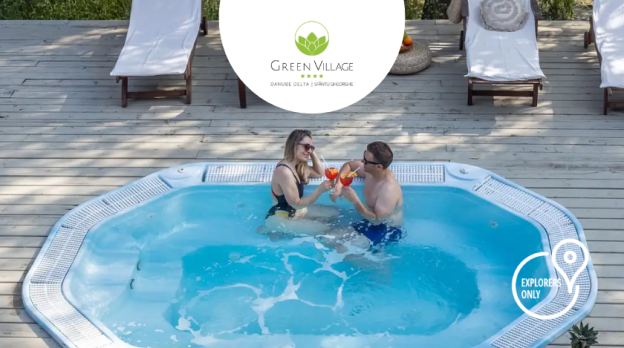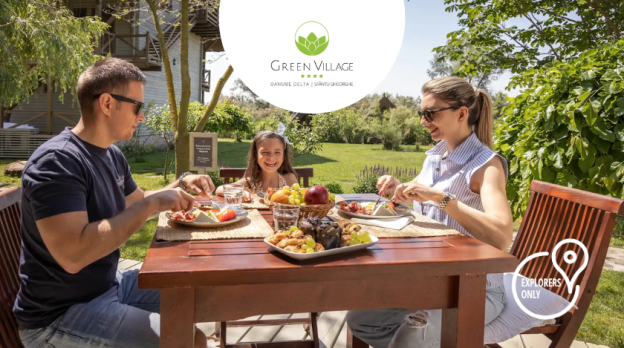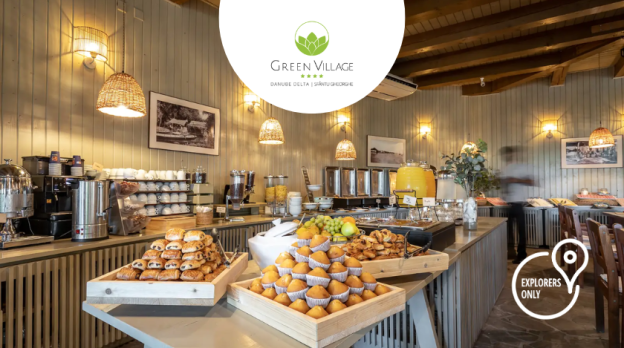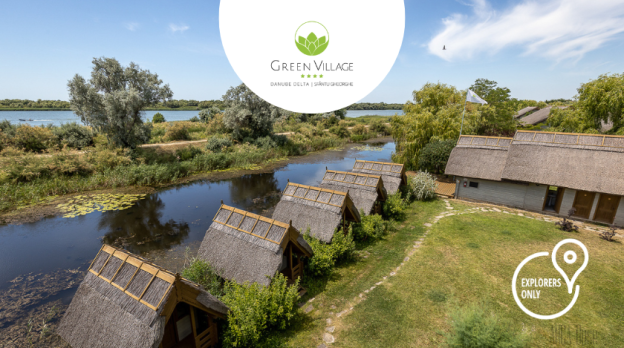The Danube Delta, a unique natural paradise in Europe, offers incredible opportunities for nature photography.
From spectacular landscapes to rich and diverse wildlife, this area is perfect for birdwatching and photography enthusiasts. Mai mult

The Danube Delta, a unique natural paradise in Europe, offers incredible opportunities for nature photography.
From spectacular landscapes to rich and diverse wildlife, this area is perfect for birdwatching and photography enthusiasts. Mai mult

The Danube Delta is not only a natural paradise, but also a place steeped in unique traditions and customs, preserved over generations by local communities. From traditional fishing to folk dances and songs, visitors to the Green Village Resort can discover an authentic world rich in culture and history. Mai mult

The Danube Delta is a magical place where nature meets tranquility and romance. And Green Village Resort, located in the middle of this paradise, is the ideal destination for couples who want to escape to a corner of paradise in an intimate and charming setting. Mai mult

Autumn is the ideal time to explore the natural splendor of the Danube Delta, a corner of paradise recognized worldwide for its exceptional biodiversity. Mai mult

The Danube Delta is a true nature lover’s paradise, a destination where time seems to stand still and the wild landscapes take your breath away. Mai mult

Imagine a vacation amid nature, where the sounds of the city fade away and are replaced by birdsong and the murmur of water. The Danube Delta, one of the most spectacular natural destinations in the world, is the ideal place for such an escape. Mai mult

The Danube Delta, one of the most beautiful and well-preserved natural regions in Europe, is a dream destination for nature and adventure lovers. Mai mult

At the Green Village 4* Resort, the culinary experience is an invitation to discover the gastronomic traditions of the Delta, through dishes prepared with carefully chosen ingredients and recipes handed down from generation to generation, from Dobrogea and international. Mai mult

Are you looking for the perfect location for unforgettable corporate events? Green Village 4* Resort, located in the heart of the Danube Delta, is the ideal choice. With incredible scenery, modern facilities, and a relaxing atmosphere, this resort offers an exceptional setting for business meetings, conferences, training, or team building. Mai mult

The Danube Delta, a natural paradise in Romania, is the perfect place for a family vacation. With stunning landscapes, impressive biodiversity and activities for all ages, the Danube Delta promises an unforgettable experience. Top attractions include the Letea Forest and Caraorman Forest, two destinations not to be missed. Mai mult
